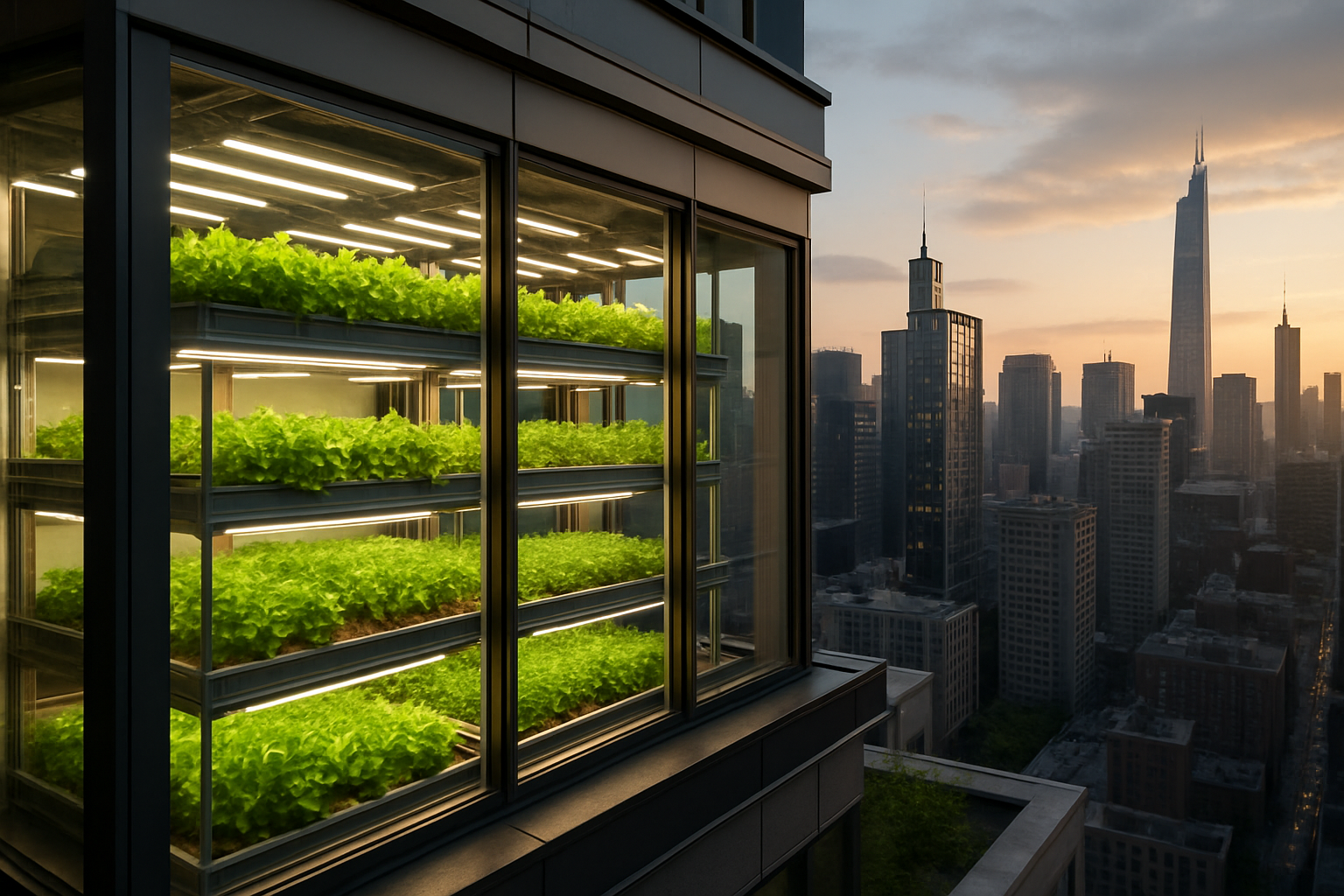Unraveling the Potential of Vertical Farming in Urban Real Estate
The integration of vertical farming into urban real estate is reshaping the landscape of both agriculture and property development. This innovative approach to food production within city limits is not just a fleeting trend, but a transformative solution addressing urbanization challenges, food security concerns, and the demand for sustainable living spaces. As cities continue to expand and arable land becomes scarce, the marriage of agriculture and architecture presents a compelling opportunity for investors, developers, and urban planners alike.

The origins of vertical farming can be traced back to the early 20th century, with the idea gaining momentum in the 1990s. However, it’s only in the last decade that technological advancements and pressing environmental concerns have catapulted vertical farming into the spotlight of urban development. Real estate developers are now recognizing the potential of incorporating these agricultural systems into residential complexes, office buildings, and mixed-use developments.
The Intersection of Agriculture and Urban Real Estate
The convergence of vertical farming and urban real estate is creating a new category of properties that blend living spaces with food production. This innovative approach is not only addressing the growing demand for locally sourced produce but also enhancing the value proposition of urban properties. Developers are finding that incorporating vertical farms can significantly increase property appeal, particularly among environmentally conscious tenants and buyers.
These integrated systems can range from small-scale hydroponic setups in apartment balconies to large commercial operations occupying entire floors of skyscrapers. The versatility of vertical farming technologies allows for customization based on the specific needs and constraints of different urban environments, making it an adaptable solution for various real estate projects.
Financial Implications for Real Estate Investors
From an investment perspective, the integration of vertical farming into urban real estate presents both opportunities and challenges. On one hand, properties featuring vertical farms can command premium prices due to their unique offerings and appeal to a growing segment of eco-conscious consumers. The ability to produce fresh, locally grown food year-round adds a tangible benefit that can justify higher rents or sale prices.
However, the initial costs of implementing vertical farming systems can be substantial. Investors need to carefully weigh the upfront expenses against the potential long-term returns. Factors such as energy consumption, maintenance requirements, and the scalability of the farming operations all play crucial roles in determining the financial viability of these projects.
Market Trends and Consumer Demand
Recent market research indicates a growing consumer preference for sustainably produced, locally sourced food. A 2022 study by the International Food Information Council found that 52% of consumers consider sustainability when making food choices. This trend aligns perfectly with the value proposition of vertical farming in urban real estate, suggesting a robust demand for properties that offer this unique feature.
Moreover, the COVID-19 pandemic has heightened awareness of food security issues and the importance of local food production. This shift in consumer consciousness is likely to further drive interest in urban properties that incorporate vertical farming elements, potentially accelerating the adoption of this trend in real estate development.
Regulatory Landscape and Urban Planning Considerations
As the concept of integrating vertical farms into urban real estate gains traction, city planners and policymakers are grappling with how to regulate and incentivize these developments. Some cities are already implementing zoning changes and offering incentives to encourage the incorporation of urban agriculture into new and existing buildings.
For instance, New York City has introduced zoning amendments that support and expand urban agriculture, including rooftop greenhouses and indoor farming. Similarly, Singapore has set ambitious goals for urban food production, offering grants and technical support for buildings that incorporate farming elements.
Real estate developers and investors need to stay abreast of these evolving regulations, as they can significantly impact the feasibility and profitability of vertical farming projects in urban settings.
Technological Advancements Driving Adoption
The rapid advancement of vertical farming technologies is a key factor driving its integration into urban real estate. Innovations in LED lighting, hydroponics, aeroponics, and automated systems have made it increasingly feasible to cultivate crops efficiently in confined urban spaces.
These technological improvements are not only enhancing crop yields and reducing resource consumption but also making vertical farming systems more adaptable to various building types. As these technologies continue to evolve and become more cost-effective, we can expect to see a wider adoption of vertical farming in urban real estate projects.
Challenges and Future Outlook
While the potential of vertical farming in urban real estate is significant, several challenges remain. Energy consumption is a major concern, as the artificial lighting and climate control systems required for indoor farming can be resource-intensive. Addressing this issue through renewable energy solutions and more efficient technologies will be crucial for the long-term sustainability of these projects.
Additionally, the complexity of managing agricultural operations within urban buildings requires specialized knowledge and skills. Real estate developers and property managers will need to collaborate closely with agricultural experts to ensure the success of these integrated systems.
Looking ahead, the convergence of vertical farming and urban real estate is poised to reshape our cities. As technology advances and consumer demand for sustainable living solutions grows, we can expect to see more innovative developments that seamlessly blend living spaces with food production. This trend has the potential to transform urban landscapes, enhance food security, and create new opportunities in the real estate market.
For investors and developers willing to navigate the complexities of this emerging field, the integration of vertical farming into urban real estate offers a unique opportunity to be at the forefront of sustainable urban development. As cities continue to evolve, properties that successfully merge agriculture with urban living may well become the new gold standard in real estate innovation.





